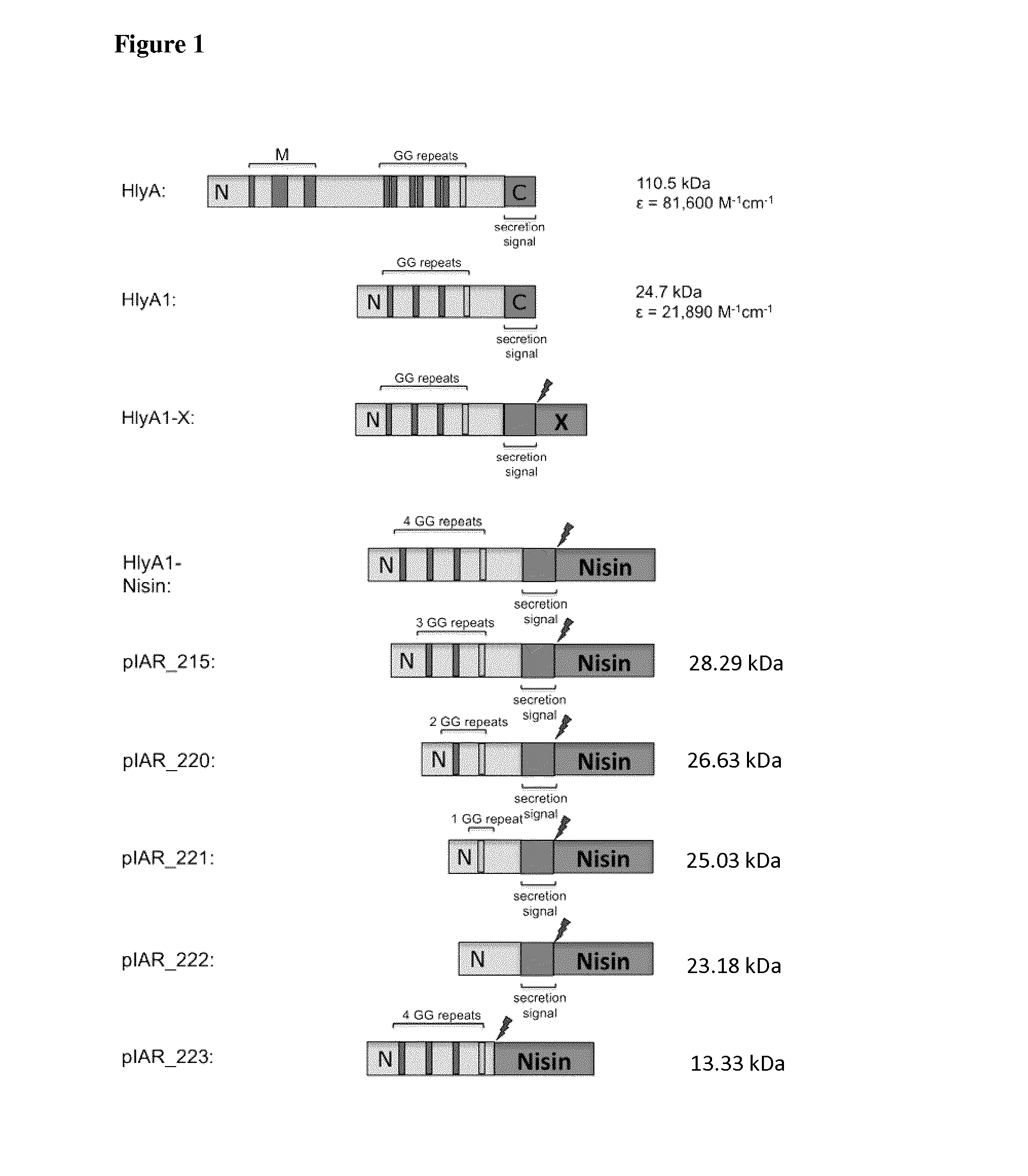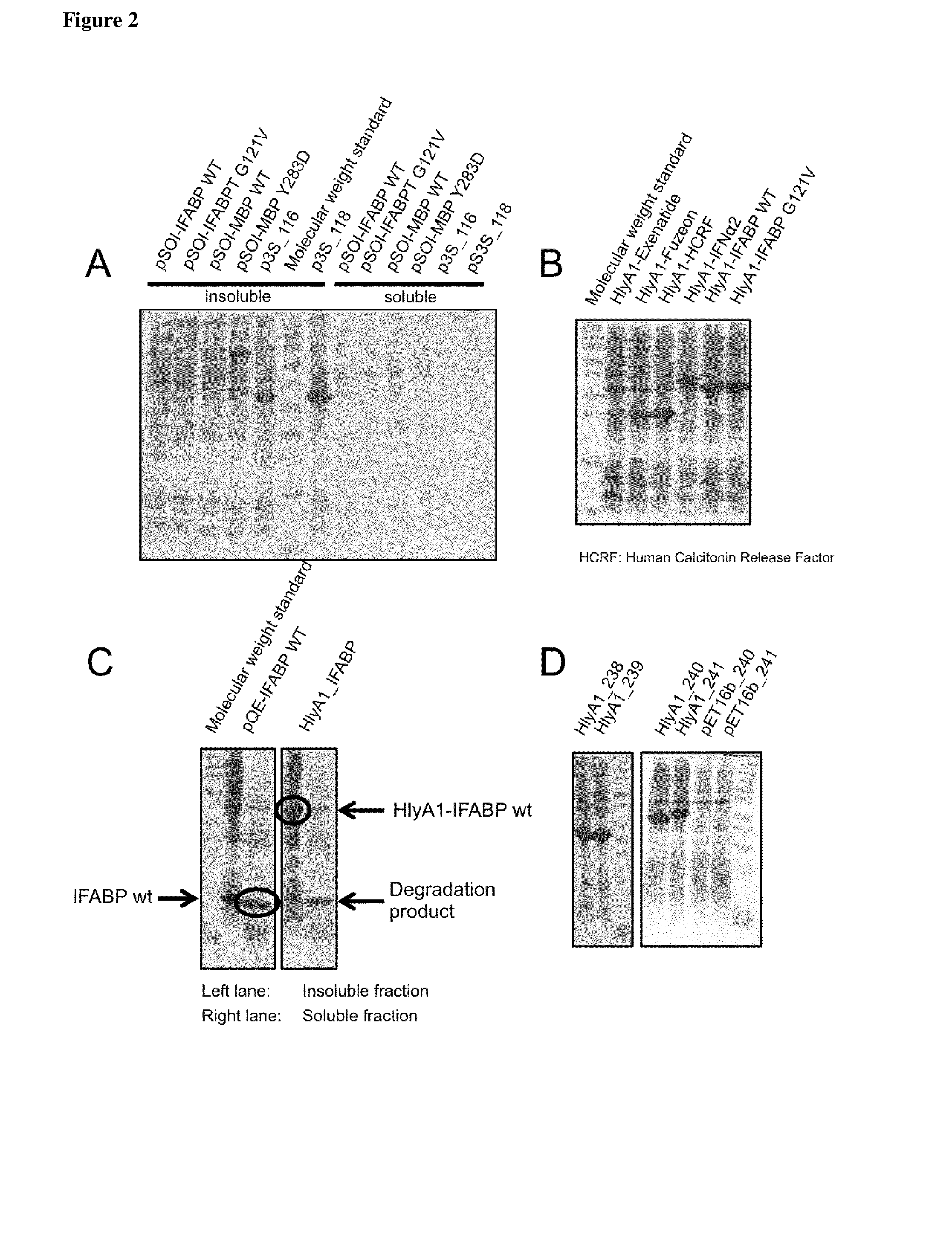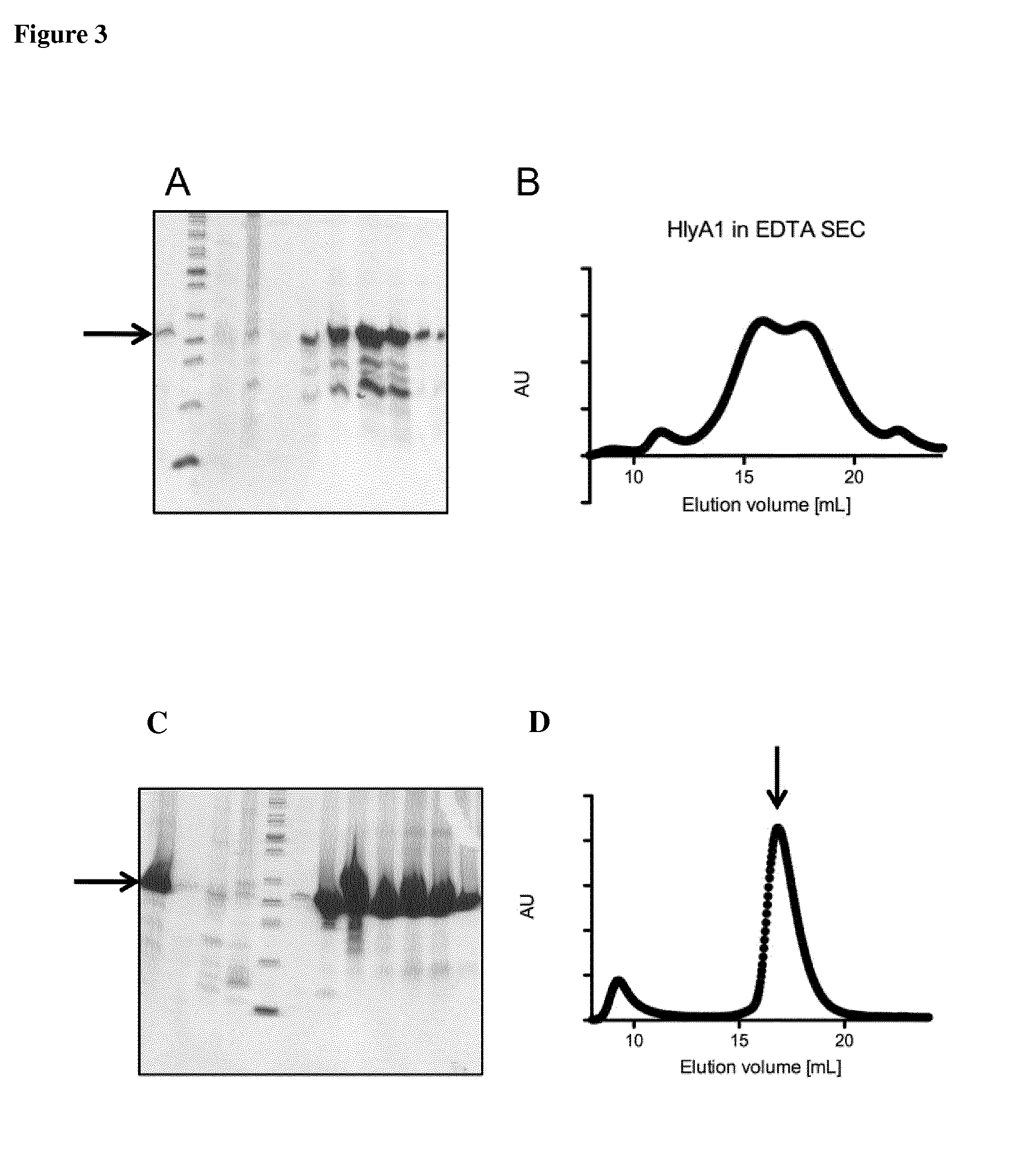Methods for the expression of peptides and proteins
a technology of peptides and proteins, applied in the field of molecular biology, can solve the problems of increasing the cost of the final step to 100% purity, limiting the expression of recombinant peptides and proteins, and increasing the cost of the final step to achieve 100% purity
- Summary
- Abstract
- Description
- Claims
- Application Information
AI Technical Summary
Benefits of technology
Problems solved by technology
Method used
Image
Examples
example 1
Formation of IBs of PeOI or PrOI that are N-Terminally or C-Terminally Fused to HlyA or Fragments Thereof
[0155]All indicated PrOI and PeOI fused N-terminal to HlyA or fragments of HlyA (for instance HlyA1, see FIG. 1 for a scheme of some constructs) aggregate in the cells as IBs (FIG. 2). Remarkably, unconjugated IFABP is normally soluble inside cells (see FIG. 2C). These results indicate that HlyA and fragments of HlyA induce the formation of IBs and transfer this characteristic to fused peptides and proteins.
[0156]PrOI or PeOI fused C-terminal to HlyA or fragments of HlyA (for instance HlyA1, see FIG. 1 for a schematic view of the constructs) were expressed in E. coli (FIG. 2B) and are insoluble inside cells (see exemplary HlyA1-IFABP, FIG. 2C). Thus, HlyA and fragments of HlyA force the aggregation as IBs of PrOI and PeOI fused to its N- and C-terminus.
[0157]Fusion proteins of HlyA or fragments thereof and peptide oligomers consisting of two, three, four, five, six, seven, eight,...
example 2
Purification and Refolding of HlyA and HlyA1
[0159]HlyA and HlyA1 were produced in E. coli as IBs. The IBs were refolded in the presence of EDTA or CaCl2, respectively. Refolding efficiencies were about 35% with EDTA and inhomogeneous, instable HlyA or HlyA1 were obtained. FIGS. 3A and B show results for the HlyA fragment HlyA1. In contrast, over 90% of HlyA or HlyA1 were refolded in the presence of Ca2+ and proteins were stable and homogeneous (FIGS. 3C and D).
example 3
Purification and Refolding of HlyA1-Nisin
[0160]From 5 g cells expressing HlyA1-Nisin (encoded by plasmid pIAR_214), about 140 mg crude IBs of HlyA1-Nisin were prepared, denaturated and refolded. In the presence of EDTA, most protein was insoluble and aggregated and only low amounts of inhomogeneous HlyA1-Nisin were produced (FIGS. 4A and C). Refolding with Ca2+, in contrast, produced a homogeneous protein species with high purity and in high yields (FIGS. 4B and C). The refolding efficiency was higher than 95% in the presence of Ca2+ and below 25% in the presence EDTA.
[0161]Subsequent to refolding, Nisin was separated from HlyA1 by site-specific proteolysis with Factor Xa (FIG. 4D). After 90 min, 100 μL of the reaction mixture was purified by HPLC (FIG. 4E). Elution fractions were analyzed by SDS-PAGE analysis (FIG. 4F), Western Blotting and mass spectrometry (data not shown) and the complete Nisin molecule was identified.
PUM
| Property | Measurement | Unit |
|---|---|---|
| pH | aaaaa | aaaaa |
| temperature | aaaaa | aaaaa |
| concentration | aaaaa | aaaaa |
Abstract
Description
Claims
Application Information
 Login to View More
Login to View More - R&D
- Intellectual Property
- Life Sciences
- Materials
- Tech Scout
- Unparalleled Data Quality
- Higher Quality Content
- 60% Fewer Hallucinations
Browse by: Latest US Patents, China's latest patents, Technical Efficacy Thesaurus, Application Domain, Technology Topic, Popular Technical Reports.
© 2025 PatSnap. All rights reserved.Legal|Privacy policy|Modern Slavery Act Transparency Statement|Sitemap|About US| Contact US: help@patsnap.com



